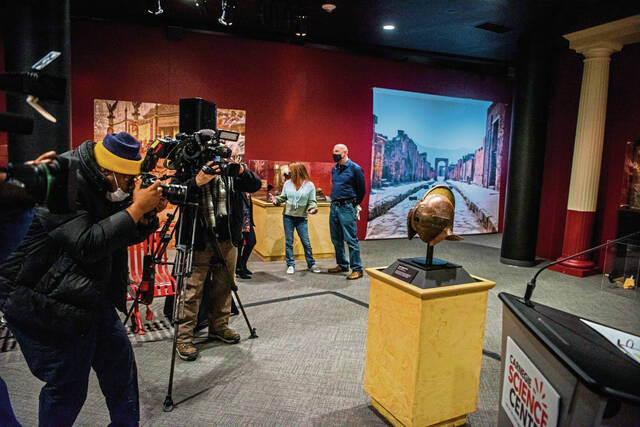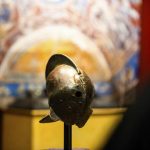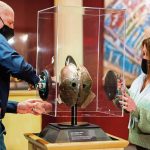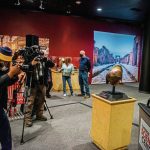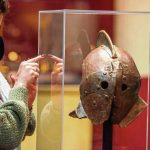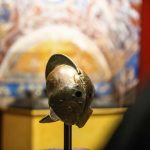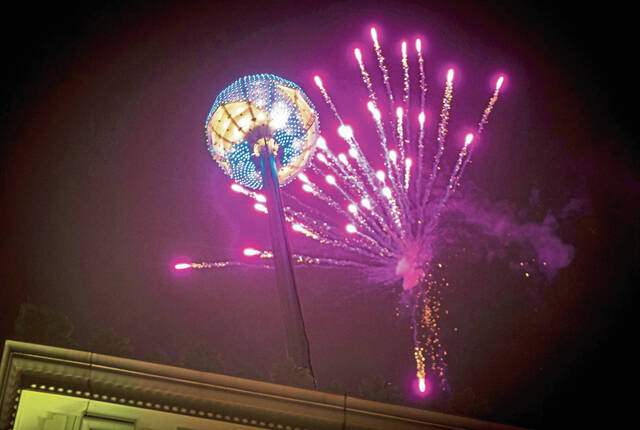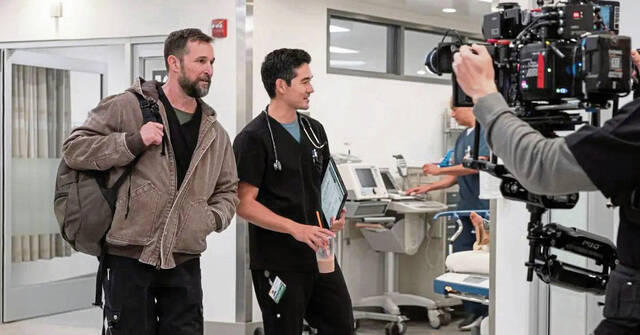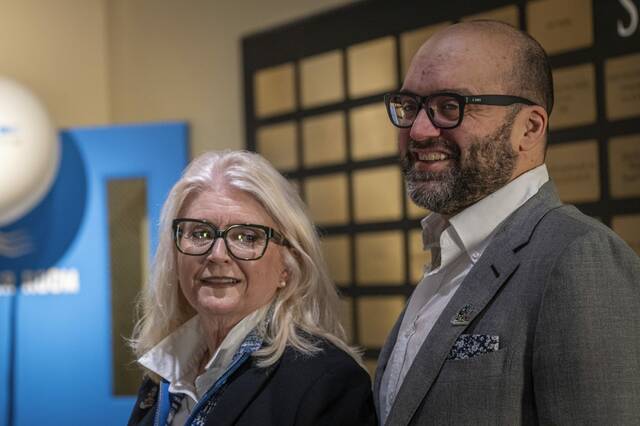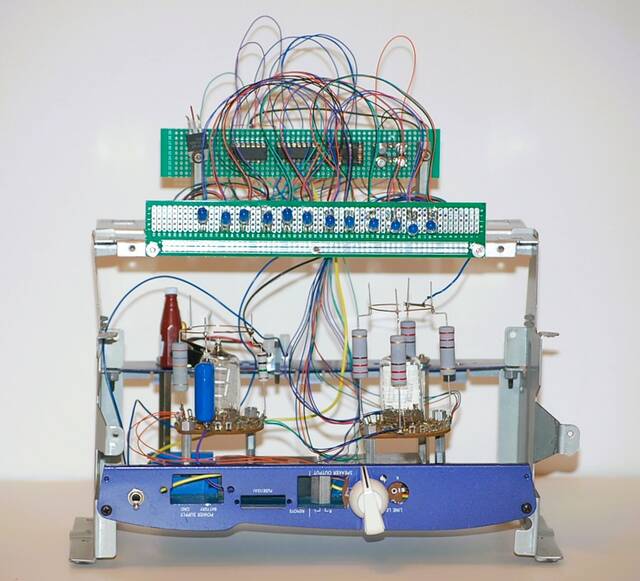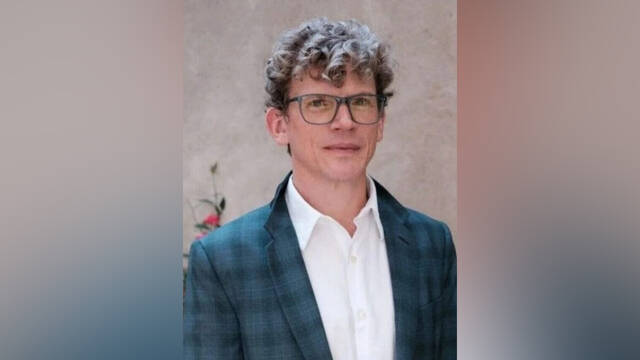Imagine wearing a cast iron 25-pound helmet with only tiny eye holes.
That’s what a Secutor gladiator wore during battles in Rome.
Guests can see an authentic ancient helmet at the Carnegie Science Center in Pittsburgh for “Pompeii: The Exhibition.”
The head piece traveled more than 4,500 miles from Pompeii to Pittsburgh. It is one of more than 180 artifacts that are part of the exhibit, which runs through April 24.
The helmet from 79 A.D. was unveiled at a news conference Tuesday.
“The collection in ‘Pompeii: The Exhibition’ is unlike any that has traveled. It is the most impressive collection of real artifacts on tour from Pompeii,” said John Norman, CEO of World Heritage Exhibitions, producers of the exhibit, in a statement. “As we tour with this world-class exhibition, we want to ensure that we maintain the condition of these global treasures so they can be viewed for centuries to come.”
This is the first time the helmet will be showcased in the U.S. It was one of the artifacts discovered after an eruption of Mount Vesuvius destroyed the Italian city. The collection was preserved in volcanic ash for nearly 1,700 years.
There's a new (ancient) artifact in POMPEII: THE EXHIBITION…
A Secutor gladiator helmet! This type of helmet has a front panel which could be lifted for a wider field of vision.
POMPEII: THE EXHIBITION is displayed in @PPG SCIENCE PAVILION™️ and presented by @PACyber! pic.twitter.com/TEx3gFq7dP
— Carnegie Science Center (@CarnegieSciCtr) January 11, 2022
The helmet arrived here from the Naples Archaeological Museum. The registrar from World Heritage Exhibitions determined it needed additional restoration work because of signs of corrosion.
Squirrel Hill resident Michael Belman, a conservator, helped with the restoration. He owns Fine Arts Conservation Services with his wife, Chantal Bernicky.
The couple has experience in restoring old objects — especially metal ones. The work took about a month.
“While this is normal for archaeological finds, active corrosion can weaken the joints of past restorations, and they can potentially release, just as these did,” said Belman, who has worked at the Museum of Modern Art in New York City, the Williamstown Art Conservation Center in Massachusetts and the National Gallery of Art in Washington, D.C.
He has held positions as objects conservator at the Carnegie Museum of Art in Oakland and head of objects conservation at the Intermuseum Conservation Association in Cleveland.
The helmet is a “particularly significant artifact” and one of the most prominent enduring images of that era, said Jason Brown, the Henry Buhl Jr. director of Carnegie Science Center.
Brown said being able to team with a local conservationist “is a testament to the great talent in our community.”
He said he continues to be amazed at the world-class experts in Pittsburgh from the arts to sports and everything in between. The area is a progressive, forward-thinking one and often recognized as one of the most livable cities, Brown said.
Joe Powell, production manager for World Heritage Exhibitions, said he searches to collaborate with local conservators on such projects.
Belman and Bernicky’s work will forever be connected to the artifacts when the exhibit leaves Pittsburgh for its next stop at the science center in Washington, D.C., Powell said.
The exhibit showcases objects more than 2,000 years old, from jewelry and marble statues to cookware, coins and warming braziers (vessels that burn wood or charcoal). It is located in the science center’s PPG Science Pavilion and presented by Pennsylvania Cyber Charter School.
Belman said the restoration shed light on the helmet’s history. Because the helmet was misshapen, it most likely was face-down on its left side in the ground.
When such objects are pulled from the earth and come in contact with the atmosphere, they require emergency stabilization, he said.
He worked to remove the corrosion and used tinted epoxy gel for the repair. He said they protected the helmet with blankets and pillows.
“Having visited Pompeii, I have an appreciation for arms and armor,” Belman said. “As soon as I heard about this helmet, I wanted to work on it. I didn’t care what was involved. I just wanted to work on it. As I was working on it, I thought about the person who wore this and being heavily armored while the opponent was lightly armored and more agile.”




